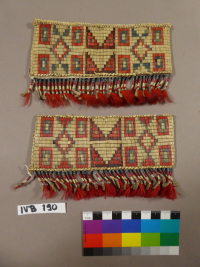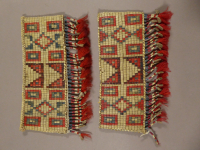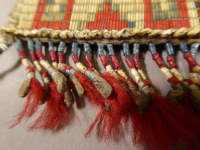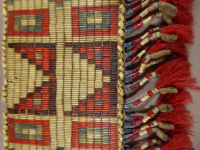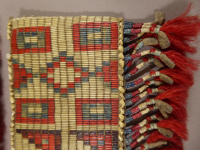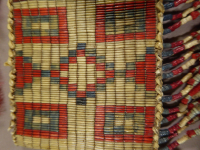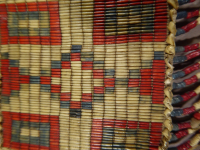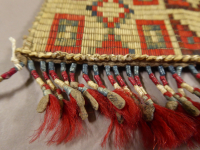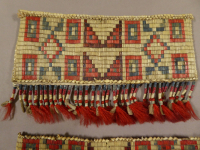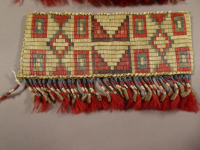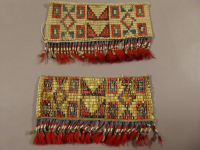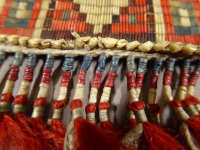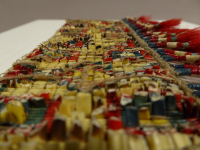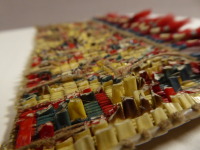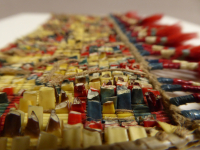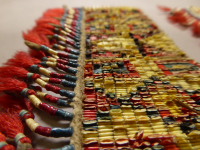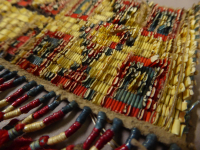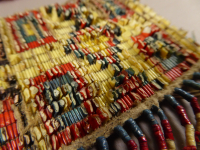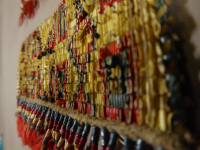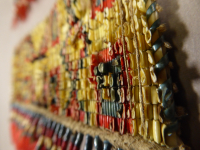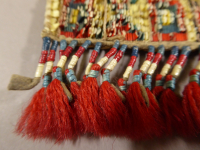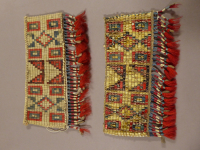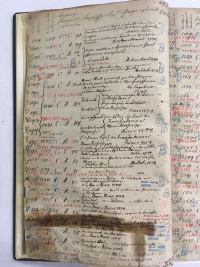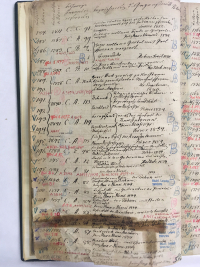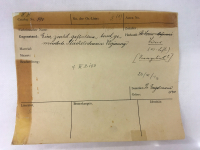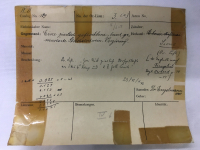quillwork bands, pair
quillwork bands, pair
quillwork bands, pair
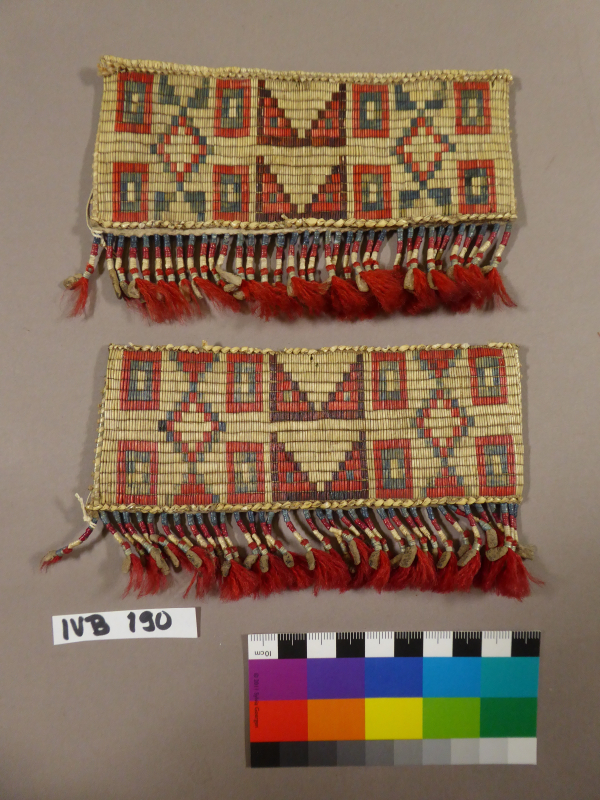
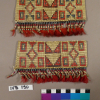
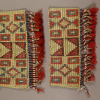
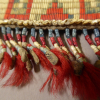
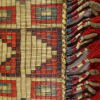


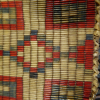
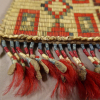
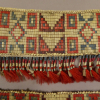
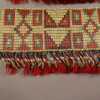
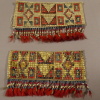
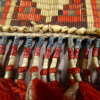
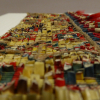

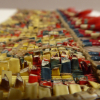
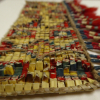


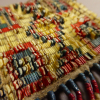


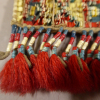
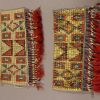
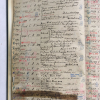
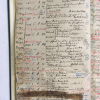
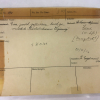
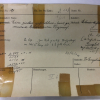
This pair of quillwork bands were made to be attached to a bag. Although the Museum record identifies these as Sioux, GRASAC researchers believe these are Cree from James Bay because of the red, blue and natural colours of the quills. There are geometric designs including: red rectangles that encompass smaller blue rectangles and natural coloured rectangles in the centre; diamond shapes outlined in blue, then red, with a natural coloured diamond in the centre; on one of the pairs there are red triangles outlined with blue, while on the other one the triangles are a natural colour set against blue rectangles; both bands contain two pairs of red triangles with a darker red outline and a central blue square that are positioned to form natural coloured valleys. The quillworker did especially beautiful edging. Both bands have teased red wool yarn tassels, quillwrapped to create a pattern of blue, red, white, red and white quills. The tassels are accompanied by hide fringes. Because the bands have not been attached to a bag, it is possible to see the quillwork techniques clearly on the reverse.
These relatives are currently in the Ethnologisches Museum Berlin, Germany.
Stylistic analysis, especially the colours and shapes of the quill work, by GRASAC researchers.
Museum documentation and GRASAC research notes
Read More About This Relative
quill; dyes; hide; wool yarn
Woven and wrapped quill work
The hide fringe was constructed from a single length of hide cut or slit into multiple thongs, with the hide strip then sewn horizontally along the band so that the slits hand down vertically.
Quill wrapping attaches the yarn tassels to the hide strip.
Geometric shapes: rectangles, triangles, diamonds.
Slight variation between the treatment of the triangles below and above the diamond shapes: one pair has red triangles outlined with blue; the other has natural coloured triangles set against blue rectangles.
These two bands would have been attached to a single bag.
The Museum catalogue card indicates the bands were collected in 1840, so they must have been made earlier in 1840 or earlier.
Provenance
Museum documentation
About This GRASAC Record
Cree Maker, Name Unknown. Quilled bands, pair. GRASAC ID 59176. Ethnologisches Museum Berlin, Catalogue Numbers IV-B-189 and IV-B-190.
This record was created by Cara Krmpotich on March 19, 2024 using images and notes created during a GRASAC research visit to the Museum in May 2019. The visit included Cara Krmpotich, Alan Corbiere, Laura Peers, Maureen Matthews, and Hannah Turner and Charles Feaver doing photography. Curator Monika Zessnik supported the team throughout the visit.
51.163729464627, -80.098107948919
James Bay is identified as an approximate location based on stylistic comparison; it does not reflect a specific location.
 Knowledge Sharing Platform
Knowledge Sharing Platform

